Building of the Day: 394-416 Park Place
Brooklyn, one building at a time. Name: Row houses Address: 394-416 Park Place Cross Streets: Underhill and Washington avenues Neighborhood: Prospect Heights Year Built: 1894 Architectural Style: Romanesque and Renaissance Revival Architect: Dahlander & Hedman Other works by architect: Other groups of row houses on nearby Sterling Place, Prospect Place and Park Place developed by…
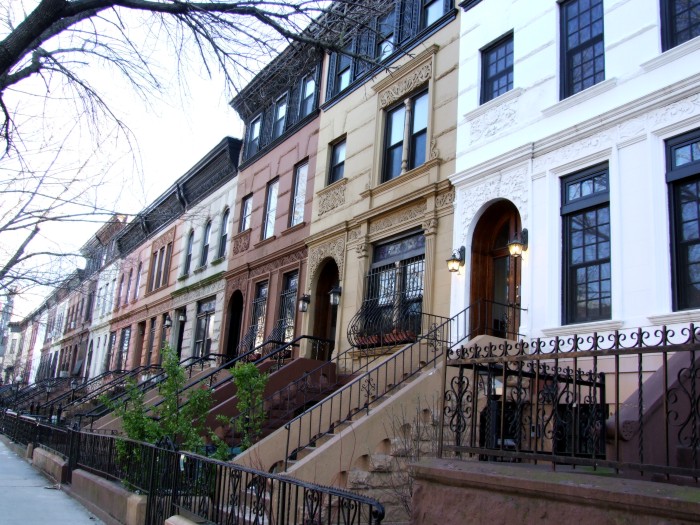

Brooklyn, one building at a time.
Name: Row houses
Address: 394-416 Park Place
Cross Streets: Underhill and Washington avenues
Neighborhood: Prospect Heights
Year Built: 1894
Architectural Style: Romanesque and Renaissance Revival
Architect: Dahlander & Hedman
Other works by architect: Other groups of row houses on nearby Sterling Place, Prospect Place and Park Place developed by Reynolds, also Bedford, Stuyvesant Heights, Park Slope, Crown Heights North
Landmarked: Yes, part of Prospect Heights HD (2009)
The story: I love all of Brooklyn’s row house housing stock, from the earliest clapboard houses to the late 1920s bungalows, but if you had to pin me down for my favorites, these would be on the list. There is just such delicate and exquisite beauty here. Two of the best architects in the business, Magnus Dahlander and Axel Hedman, like the artists they were, used a combination of mixed media here to create delight. If I lived on this block, or had to walk down it frequently, these houses would put a smile on my face, even if only for a fleeting moment. They are that good. Let’s look at why:
There are twelve houses in this group, some three stories, some four. Dahlander and Hedman randomly alternate them down the row, sometime two larger houses, followed by four smaller houses, sometimes only two, or one. The result is that your eye is encouraged to move down the row, never lulled into sameness; there is a dance here. Yet they are all related and of the same design mindset. There are seven different facades. Some of them repeat once, some don’t. There are Romanesque Revival houses next to Renaissance Revival houses. All of them have beautiful sandstone fronts, but they used different shades of sandstone. And then there is the ornament.
Carved sandstone ornament abounds, and it varies from house to house. All kinds of classical and Renaissance motifs are utilized: garlands, pilasters and capitals, cartouches, Green men and grotesque faces, animals, floral patterns, and lots of Byzantine leaf work, which winds itself throughout each the row of houses. There’s even a pair of six pointed stars. Are these stars of David? Or just more ornament designed for its visual appeal, the real meaning of the figures and symbols lost to the ages?
That would have been enough, and there’s enough carved stone and terra cotta ornament in this neighborhood to overdose on, but it is so well done in this group. Especially when combined with the other decorative elements: the stained glass transoms, the finely grained woodwork in the doorways, the front doors, and the window casings. And even the elegant cast iron railings and fencing; all add up to a gorgeous streetscape and houses of which their owners could be proud. Knowing Dahlander & Hedman’s work, the interiors were just as fine as the exteriors.
These late row house blocks of Prospect Heights were mainly developed by one man: William H. Reynolds, one of the most interesting people Brooklyn ever produced. He was one part P.T. Barnum, one part Donald Trump, and one part Boss Tweed, a consummate politician, schmoozer, real estate mogul and showman. He bought his Prospect Park land when the city sold it off after moving the boundaries of Prospect Park farther westward, to the other side of Flatbush Avenue. He bought cheap, and put hundreds of houses on his land in only the space of a couple of years, using mostly the talents of Magnus Dahlander and Axel Hedman.
These were all speculative housing, but really good speculative housing, and all different, depending on the block. Reynolds had cut his teeth on developing some of Bedford and Stuyvesant Heights’ best properties, all done before he reached the age of 25. Prospect Heights was his next project, and he put his all into it. He always lived in the neighborhood he was developing, and he did so here as well, moving from Bedford to a large and impressive mansion he had built on Eastern Parkway and Underhill. It no longer stands, but his legacy to the neighborhood endures.
Reynolds knew that the proximity to the park, as well as the easy public transportation opportunities and amenities on Flatbush and Vanderbilt Avenues would make the properties quite desirable, and that they would sell fast, and at the price he wanted. The Brooklyn Museum was in the planning stage when the last of his houses sold, also proving him right. By then, Reynolds had already moved on to his next neighborhood, Borough Park. The Reynolds houses were and still are consistently the most desired and expensive row houses in Prospect Heights. And they are still quite beautiful. GMAP
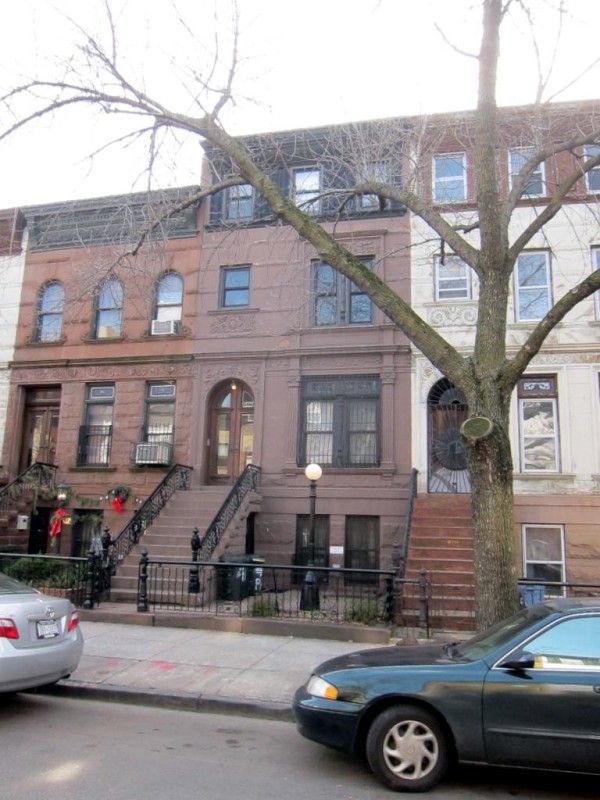
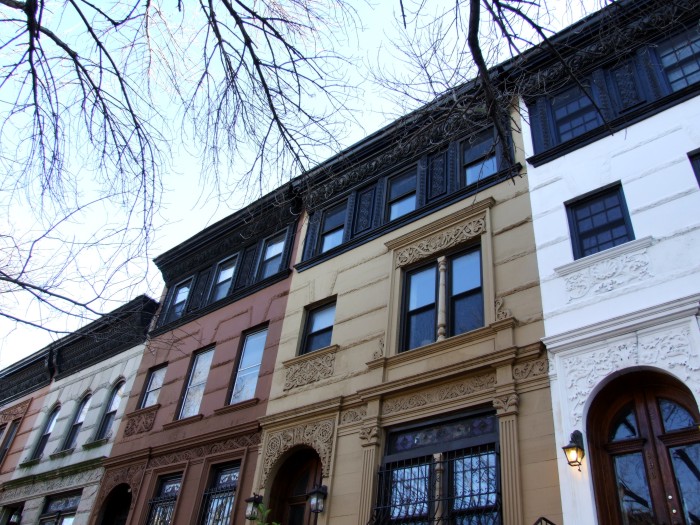
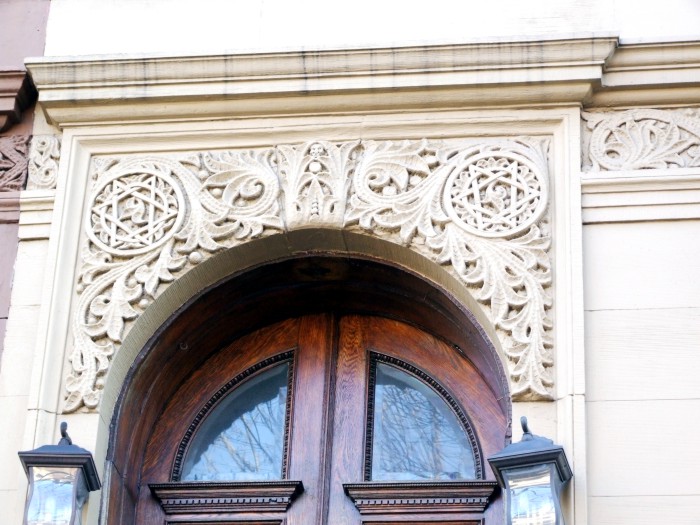
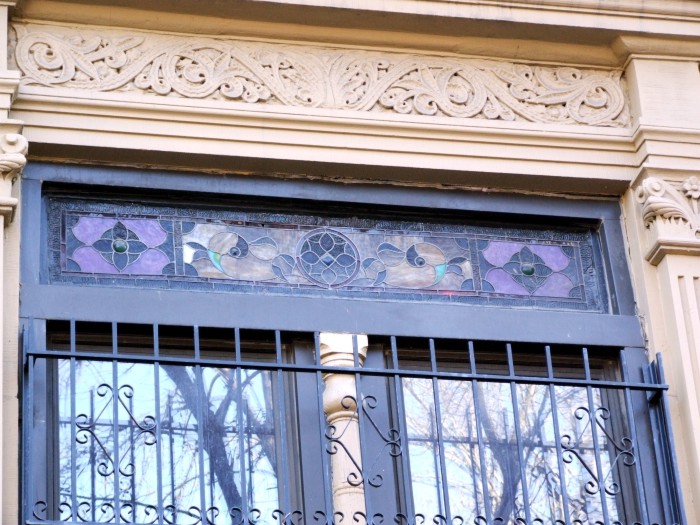
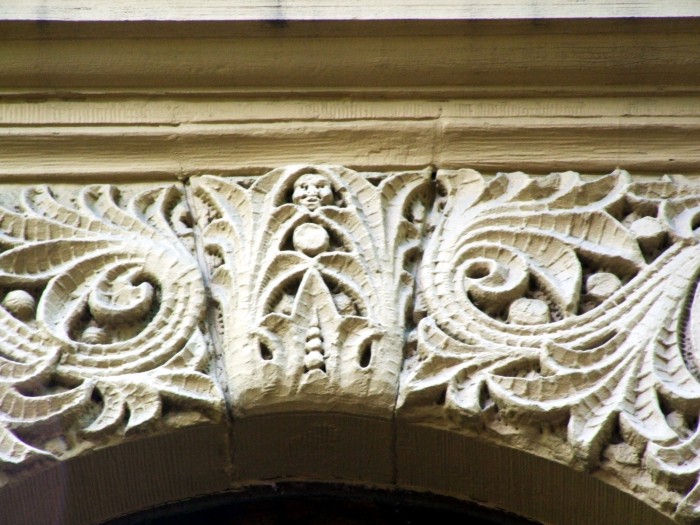





MM – Thank you for the delectable photos. It’s time to talk a stroll on Park Place.
I love these homes.. I like the star of David detail shots also very very nice…